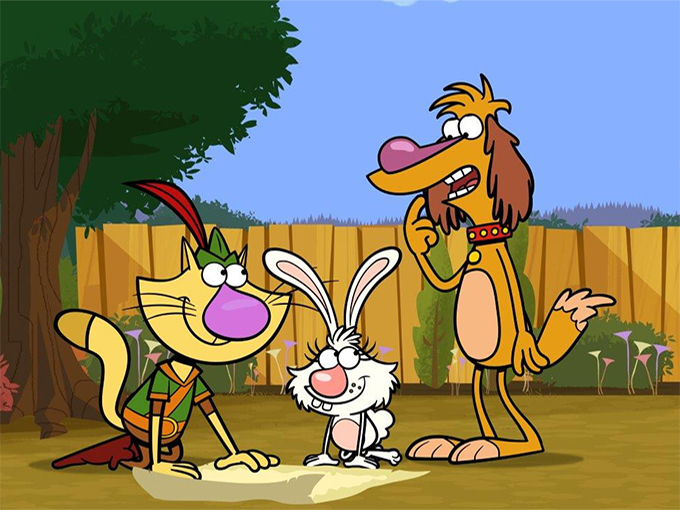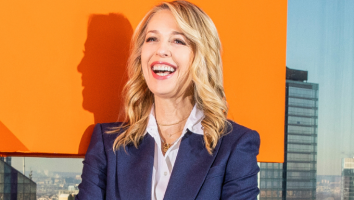There’s no shortage of preschool shows that talk about nature and the environment. Toons like Nature Cat, Dora the Explorer, Bubble Guppies, and Ready Jet Go! cover everything from animal habitats, to sand dunes and the weather. But one of the most taboo topics for kids shows these days relates to the C words—climate change. The topic isn’t openly spoken about in any science-focused shows for young kids. But there’s more to the story.
Save for lone references in shows like Doc McStuffins and Dora the Explorer, kids series may not purposely talk about climate change—but they are still familiarizing kids with the concept.
“The difficulty is that, developmentally, four- and five-year-olds are so in the moment that they can’t grasp climate. They only understand weather,” says Frances Nankin, a curriculum adviser for PBS KIDS series Nature Cat. “So it would be so misleading to make statements like, ‘The weather is changing,’ because when they see it going from hot one day to cooler the next day, they’re going to think that’s climate change.”
To be sure, climate change is a contentious subject. While there is scientific evidence supporting an environmental shift, doubters include the current White House administration, which wiped all references to climate change from its official website and eliminated information about fossil fuels from a kids’ government-run website.
“We don’t go into why too much, because it’s a big no-no for this age group. They don’t really need to know why, even though they ask why the sky is blue,” says Nankin. “It’s more about getting to know the world around them by introducing different facets of it like camouflage, what it is, what’s it like, where we find it, what happens when you use camouflage, etc.”
“It’s not considered foundational science. Kids need to know all of the stuff that we’re teaching them before they get to climate change,” says Linda Simensky, VP of children’s programming at PBS. “We’ve asked this question many times so that we understand it. All of our advisers have said it’s a concept for older kids.”
Even still, two preschool shows that have come the closest to actually bringing up climate change include a 2008 Dora the Explorer special hour-long episode entitled “Dora Saves the Snow Princess.”
“That Dora storyline dealt with climate change, but in a very child-friendly way of a snow princess,” says Cathy Galeota, Nickelodeon SVP of preschool production. “I think that these are complex issues, so they have to be handled in a simple way.”
More recently, Doc McStuffins mentioned the concept in an episode called “The Big Storm,” where Professor Hootsburg says, “As the Earth gets warmer and warmer, big storms get bigger and bigger.”
Right now, there are plenty of science-themed shows on the air for preschoolers—more than Simensky says she can even count—which means a lot more ground can be covered in terms of topics. This prevalence is partly because attitudes have started to shift away from solely teaching preschoolers language and math in educational shows.
“Historically, there has not been a lot of enthusiasm for teaching science to preschoolers. There was this feeling that kids did better going out into nature than they do watching a show about it,” says Simensky. “There has been a lot more research done since that theory was introduced, and even in the time that I’ve been at PBS KIDS, there’s a lot more enthusiasm for preschool science shows.”
Due to the ubiquity of these series, children have been able to pick up more information about nature and the world around them at an earlier age than ever before. Even though every child is taught science in school, animated preschool shows target kids earlier, and in a way that mainstream education can’t, contends Simensky.
“STEM is really considered a gap for kids. I think part of it is because kids would get to age eight or nine and then people would show up and try to make them suddenly care about science,” she says. “That’s really not the way to do it. Get them to fall in love with animals, the ocean or space.”
As a result of changing mindsets among both parents and broadcasters, shows are increasingly teaching lessons around the issue of climate change—even though you won’t hear the actual term on TV. They are designed to give preschoolers the initial puzzle pieces that they’ll put together as they grow up.
“We have more Dora episodes about keeping our oceans clean from excessive garbage, and about cleaning up the beaches,” says Galeota. “We recently did a PAW Patrol episode about rescuing a baby whale from an oil spill, which won an Environmental Media Association Award. We have a wide library of other series with episodes centered about topics like deforestation, drying rivers, endangered animals, alternative energy and community gardens.”
“With Ready Jet Go, you’re talking about space and Earth science, so you end up getting a lot in there about weather, sustainability and alternative forms of energy,” says Simensky. “I think that’s all kids at this age are looking for is an explanation of how the world works, so if you put all of our shows together you get a pretty good understanding of that.”
At the end of the day, though, it’s really what’s outside that counts.
“There are so many compelling reasons to stay inside now, so sometimes I feel like we’re just doing promotion for the outdoors,” says Simensky. “Hopefully, our shows are a reminder that if you’re going to watch TV, hopefully it will make kids want to go outside and experience the world.”























